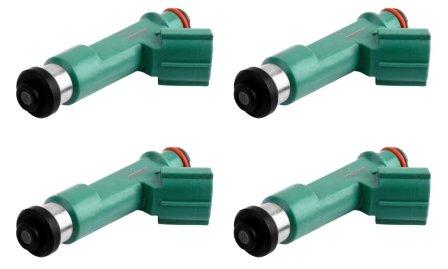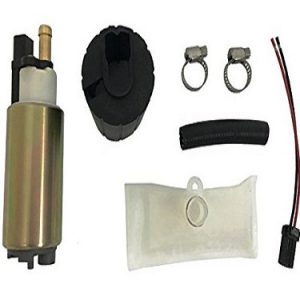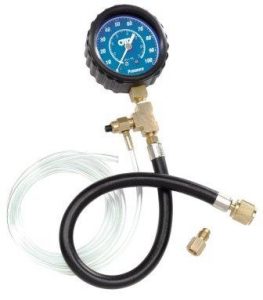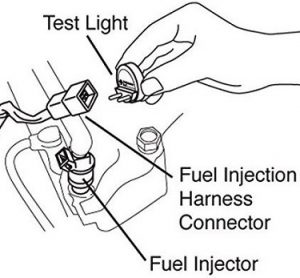
 In this guide to diagnosing fuel systems we’ll discover why this is such an important skill to master. If you own an automobile long enough chances are you’ll experience an engine that cranks around, but won’t start. When this situation occurs the root cause lies within two complex automotive systems.
In this guide to diagnosing fuel systems we’ll discover why this is such an important skill to master. If you own an automobile long enough chances are you’ll experience an engine that cranks around, but won’t start. When this situation occurs the root cause lies within two complex automotive systems.
You need to have a powerful spark to start an internal combustion engine. However, that spark becomes completely useless unless a fuel charge exists to ignite. When an engine turns over normally, but refuses to start it’s time to dig into these two possibilities. Here we’ll explore the fuel side of the equation.
Note that a vehicle specific auto repair manuals remain available for your convenience on the youfixcars.com website. These shop manuals offer no start diagnostic charts. In fact, these auto repair guides walk you through diagnosing fuel systems on specific models. This means they show you where the injector rail pressure tap is and the steps necessary to obtain a valid fuel pressure reading. Verifying proper pressure becomes one of the best places to begin diagnosis on an automobile that won’t fire up.
Where to Start Diagnosing Fuel Systems

As mentioned above, the first thing we need to do is verify we have fuel pressure within manufacturer specifications. Many times do-it-yourself mechanics start to suspect a fuel pump problem. Although this remains a possibility it’s just one of many issues that could prevent an automobile from starting properly.
If you believe the in tank unit reached the end of its life, take a quick read of this article outlining three signs of fuel pump problems. Here we’ll talk about two different ways to get a quick read on the health of your electric fuel pump. The first thing we want to verify is if the pump runs when we cycle the key to the on position.
In a perfectly quiet environment you can often hear the buzz of the fuel pump from inside the automobile when you turn the key on. However, automotive manufacturers do an excellent job of insulating the fuel tank from the rest of the automobile. This makes it hard to hear the electric pump running. With that said, if you remove the fuel cap and stick your ear near the fuel filler tube you’ll hear the pump run. Of course, you’ll need a friend to cycle the key on and off while you listen for the buzz.
Taking a Fuel Pressure Reading

If we hear the fuel pump running, it still doesn’t mean that gas reaches the engine. In fact, modern fuel injection requires 35 to 65 psi of pressure to operate properly. Most vehicle manufacturers help us out by providing a quick check Schrader valve where you can attach a pressure tester to obtain an accurate reading.
This tester becomes important for properly diagnosing fuel systems. Fortunately, you can find this important diagnostic tool in the $25 range. Here’s how you accomplish an accurate fuel pressure reading. After we attach the test gauge to the fuel rail we then cycle the key on and off to run the pump. Remember that just because the pump runs doesn’t mean that it’s actually producing any pressure.
In fact, if we have a reading on a fuel injected automobile below 40 psi it’s time to check the condition of the fuel filter. In a situation where the old filter has a lot of time and miles on it, it’s a good idea to replace it and then retest the pressure at the rail. Remember to check your auto repair manual for the proper specifications of fuel pressure for your specific automobile. This becomes important on some Mercedes-Benz automobiles that require more than 65 psi of fuel pressure to operate the injectors.
Testing for Fuel Injection Problems

We started diagnosing fuel systems at the source by checking the fuel pump first. Next we verified proper pressure all the way up to the injectors themselves. Now it’s time to see if the injectors open to allow fuel to flow into the combustion chamber at the right time.
A modern fuel injector remains in the closed position until an electronic signal from the power train control module quickly opens the tip of the injector. Here’s a tip for a fast and dirty way to find out if fuel is reaching the combustion chamber. Remove the spark plug and see if it’s wet with gas.
With that said, here’s the preferred method for testing fuel injectors. Use a specially designed test light that plugs into the injector harness. With this diagnostic test light connected you can crank the engine and look for the light to flash. This indicates the power train control module fires the injector properly.
Now it’s time to apply some common sense to what we found out so far. If the diagnostic test light flashes yet the spark plug remains dry, this provides an indication the fuel injector itself failed. Although this isn’t a common occurrence it’s certainly possible. You can take an ohmmeter to the two terminals of the fuel injector to verify the proper resistance. The fuel injector itself opens by energizing an internal magnetic coil. The two terminals should read continuity using a digital automotive meter.
Diagnosing Fuel Systems with a Logical Process
When people jump behind the wheel and the engine cranks, but doesn’t fire up, they don’t know where to start. If you read this article all the way through, you know where to start. With that said, I would like to remind you that if you have a Chevrolet 1500 series Silverado pickup truck you need to get a workshop manual to walk you through the diagnostic steps.
In addition, this service manual provides resistance specifications for the injector coil and more importantly the fuel pressure specification the pump should generate. If you decide not to repair this on your own, tell the shop how you diagnosed the fuel system and provide a list of failed components.
This demonstration of your automotive knowledge goes a long way in holding down the cost of repairing this no start situation. Trust me, when the automotive service center verifies your diagnosis, they’ll be impressed and less likely to try to pull a fast one on you.




